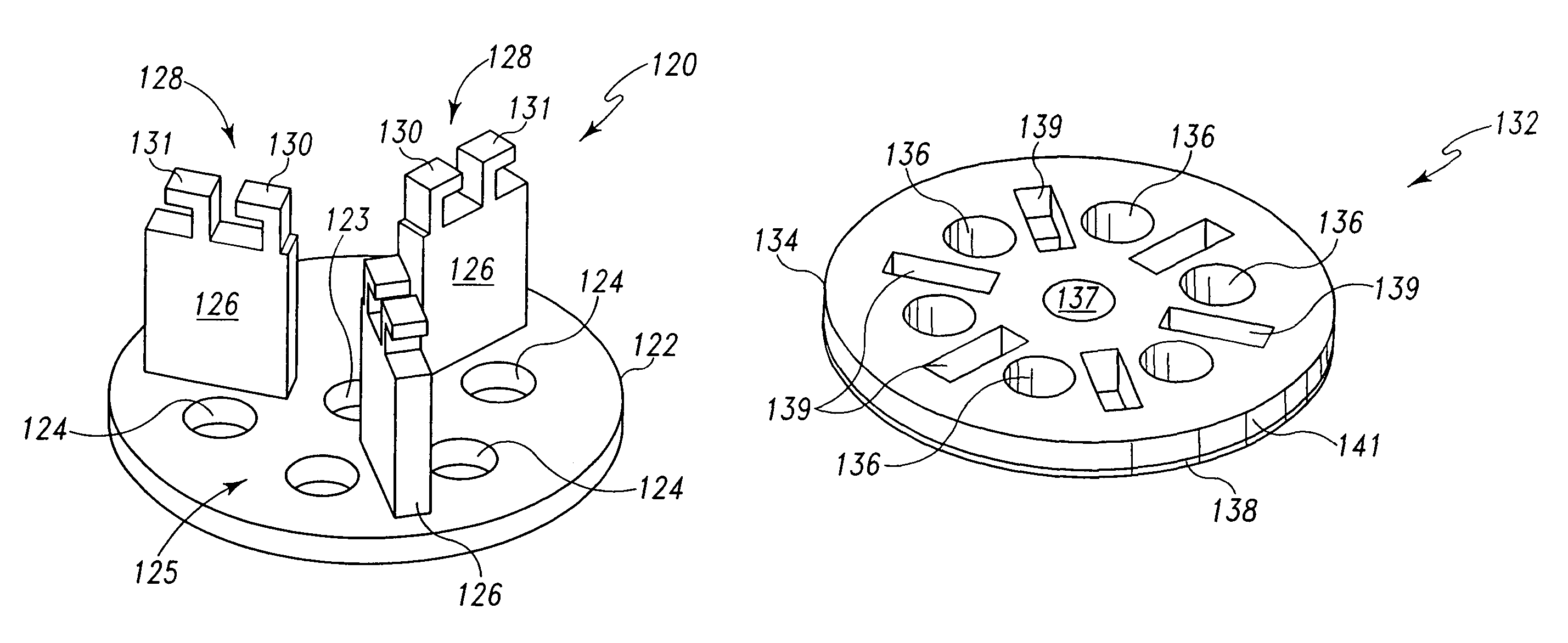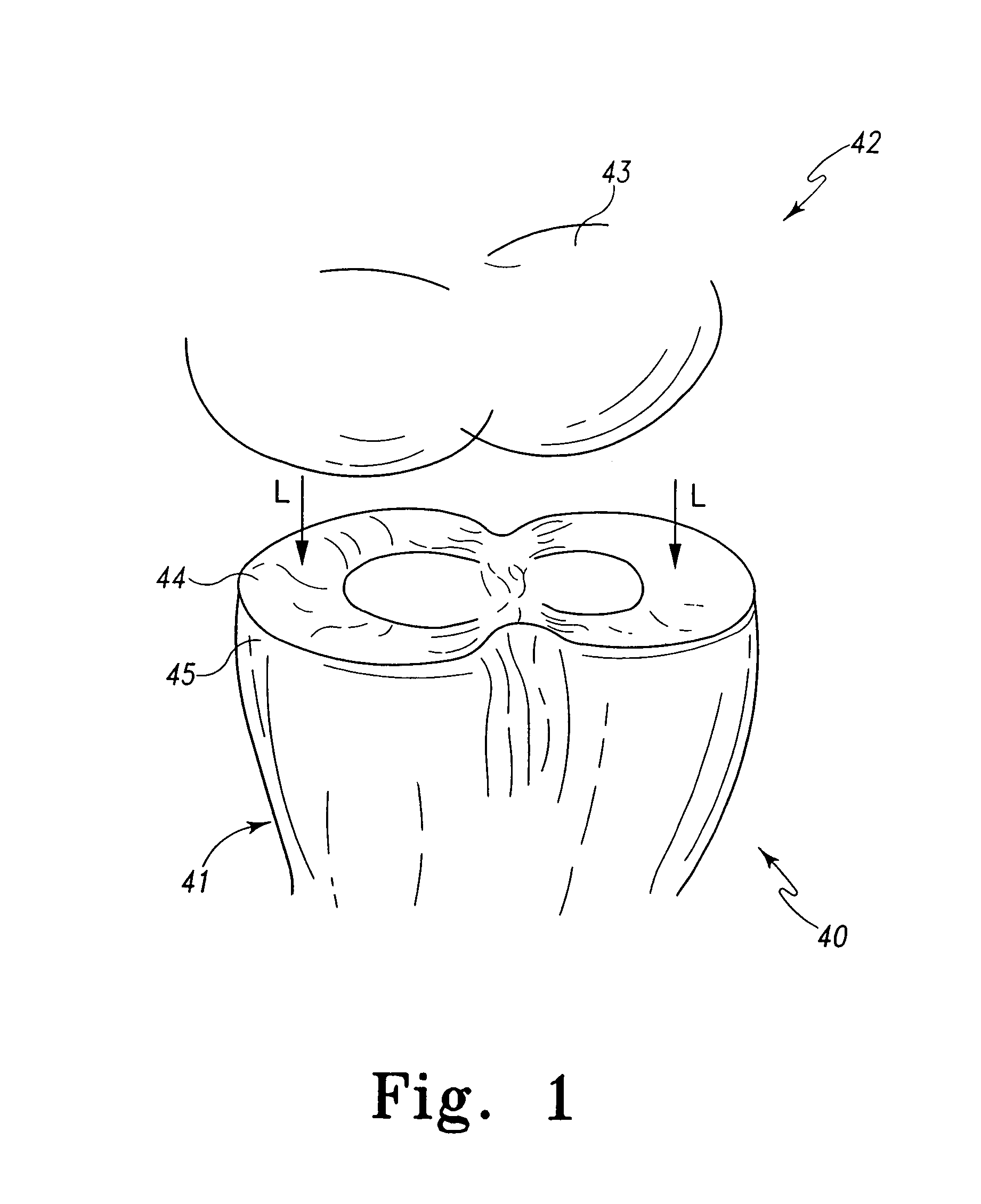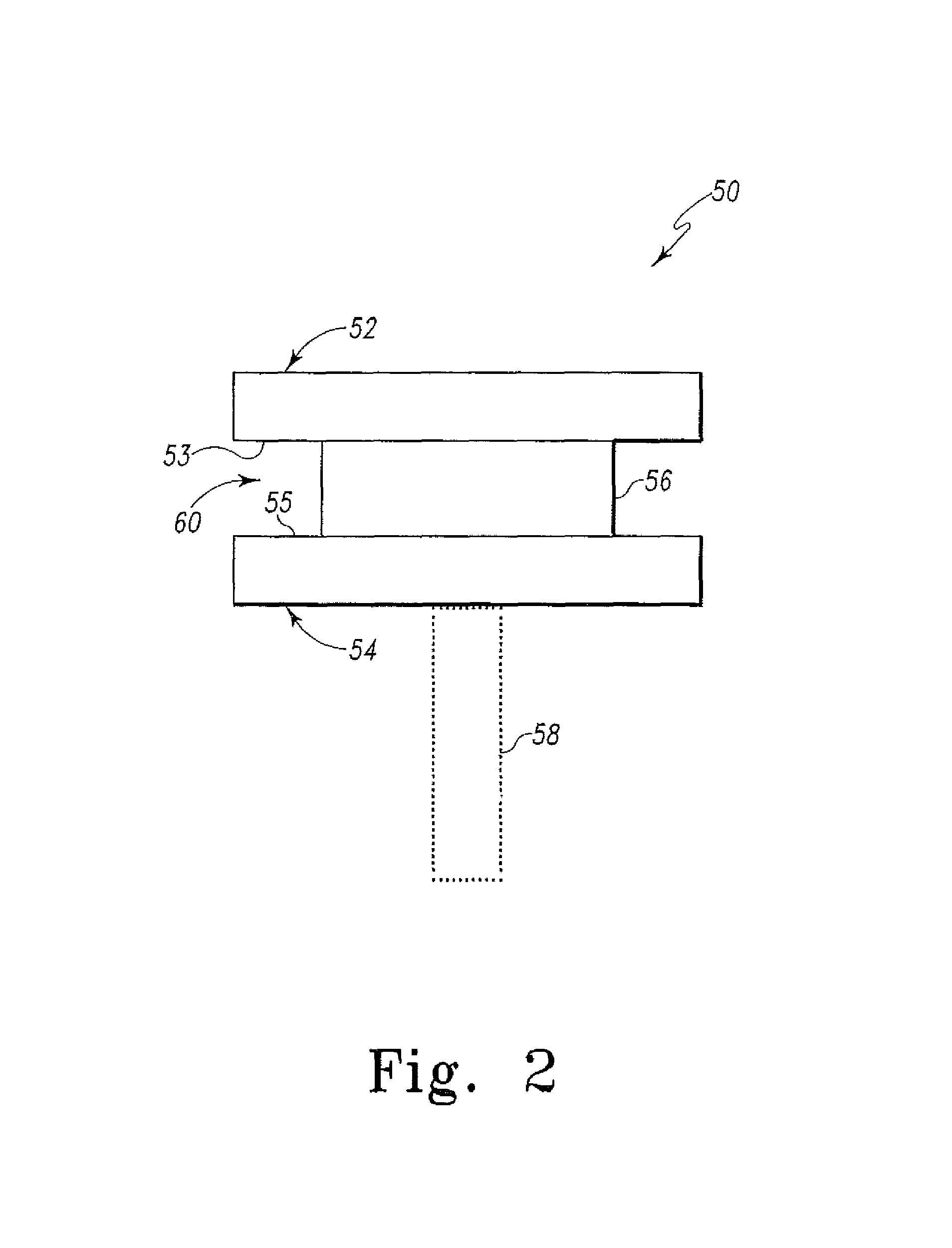Implant device for cartilage regeneration in load bearing articulation regions
a cartilage and load-bearing technology, applied in bone implants, prostheses, medical science, etc., can solve the problems of unsatisfactory current techniques for repair and/or regeneration of articular lesions (autogenous chondrocyte transplantation and mosaicplasty), load-bearing region is known to not heal spontaneously, and the current technique of articular lesions is generally considered unsatisfactory
- Summary
- Abstract
- Description
- Claims
- Application Information
AI Technical Summary
Benefits of technology
Problems solved by technology
Method used
Image
Examples
Embodiment Construction
[0051]While the invention is susceptible to various modifications and alternative forms, specific embodiments thereof have been shown by way of example in the drawings and will herein be described in detail. It should be understood, however, that there is no intent to limit the invention to the particular forms disclosed, but on the contrary, the intention is to cover all modifications, equivalents and alternatives falling within the spirit and scope of the invention as defined by the appended claims.
[0052]Referring now to FIG. 1, there is depicted a bone platform generally designated 40 being situated below condyles 42. The bone platform 40 of FIG. 1 is depicted as a tibial platform 40 of a tibia 41 while the condyles 42 are of a femur / knee. It should be appreciated that the tibial platform 40 and condyles 42 are representative of any similar bone platform. The tibial platform 40 supports a meniscus 44 that is over subchondral bone 45. The tibial platform 40 is assumed to have an o...
PUM
| Property | Measurement | Unit |
|---|---|---|
| biocompatible | aaaaa | aaaaa |
| resorption | aaaaa | aaaaa |
| conduction | aaaaa | aaaaa |
Abstract
Description
Claims
Application Information
 Login to View More
Login to View More - R&D
- Intellectual Property
- Life Sciences
- Materials
- Tech Scout
- Unparalleled Data Quality
- Higher Quality Content
- 60% Fewer Hallucinations
Browse by: Latest US Patents, China's latest patents, Technical Efficacy Thesaurus, Application Domain, Technology Topic, Popular Technical Reports.
© 2025 PatSnap. All rights reserved.Legal|Privacy policy|Modern Slavery Act Transparency Statement|Sitemap|About US| Contact US: help@patsnap.com



